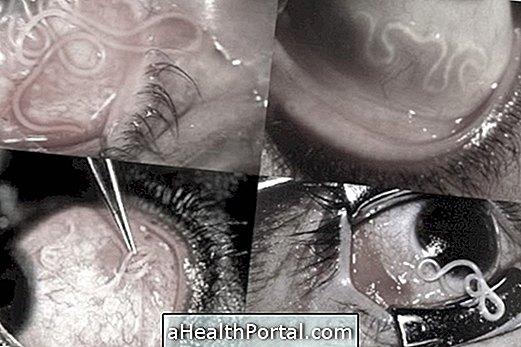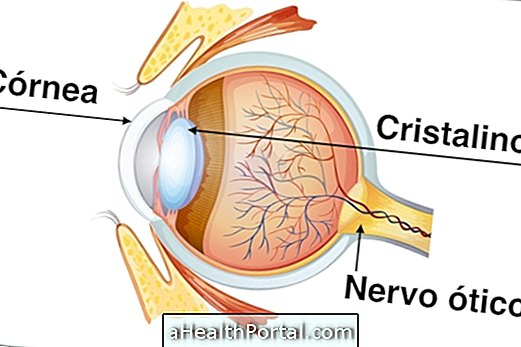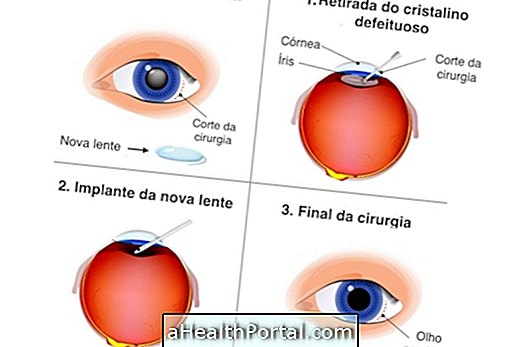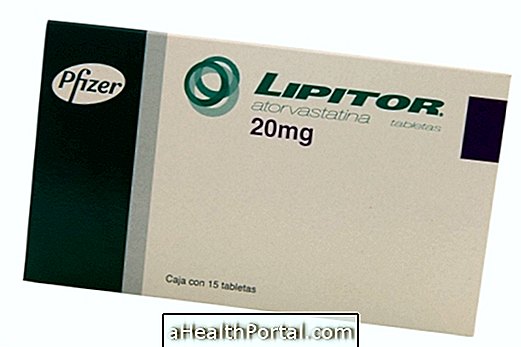Calyx consists of the inflammation of Meibomian glands, which are sebaceous glands that are located near the roots of the cilia and produce a greasy secretion. This inflammation results in obstruction of the opening of these glands, leading to the appearance of cysts that may increase over time, and may compromise vision.
Treatment for calyza is usually done with the use of warm compresses, but if the cyst does not disappear or increase in size, it is important to consult an ophthalmologist so that the possibility of removal can be assessed through a small surgical procedure.

Calyx symptoms in the eye
The most common symptoms caused by calyx in the eye are:
- Formation of a cyst or lump, which can increase in size
- Swelling of the eyelids;
- Pain in the eye;
- Irritation in the eye;
- Difficulty in seeing and blurred vision;
- Lacrimation;
- Sensitivity to light.
After a few days, the pain and irritation may disappear, leaving only a painless lump in the eyelid that grows slowly during the first week, may continue to grow, exerting more and more pressure on the eyeball and may leave the vision blurred.
Main causes
Chalky is most common to occur in people who possess seborrhea, acne, rosacea, chronic blepharitis or who have recurrent conjunctivitis since it is caused by blockage of the glands located in the lower or upper eyelids. Know other causes of cyst in the eye.
Differences between calázio and terçol
Chalky causes little pain, cures in a few months and is not caused by bacteria, unlike terçol, which is characterized by the inflammation of the glands of Zeis and Mol, due to the presence of bacteria, which causes a lot of pain and discomfort, as well as curing in about 1 week.
Thus, it is important to go to the doctor as soon as the first symptoms appear so as to follow the appropriate treatment, since in the case of the sty, it may be necessary to take an antibiotic. Learn more about the tub.
What treatment?
Most calyxes heal on their own, disappearing untreated in about 2 to 8 weeks. However, if warm compresses are applied 2 to 3 times a day for about 5 to 10 minutes, the calyx may disappear faster. But it is important to always wash your hands thoroughly before touching the eye region.
If the calyx continues to grow and does not disappear in the meantime, or if it causes changes in vision, a minor surgery involving drainage of the calyx may be necessary. An injection with a corticosteroid may also be given into the eye to help reduce inflammation.






















